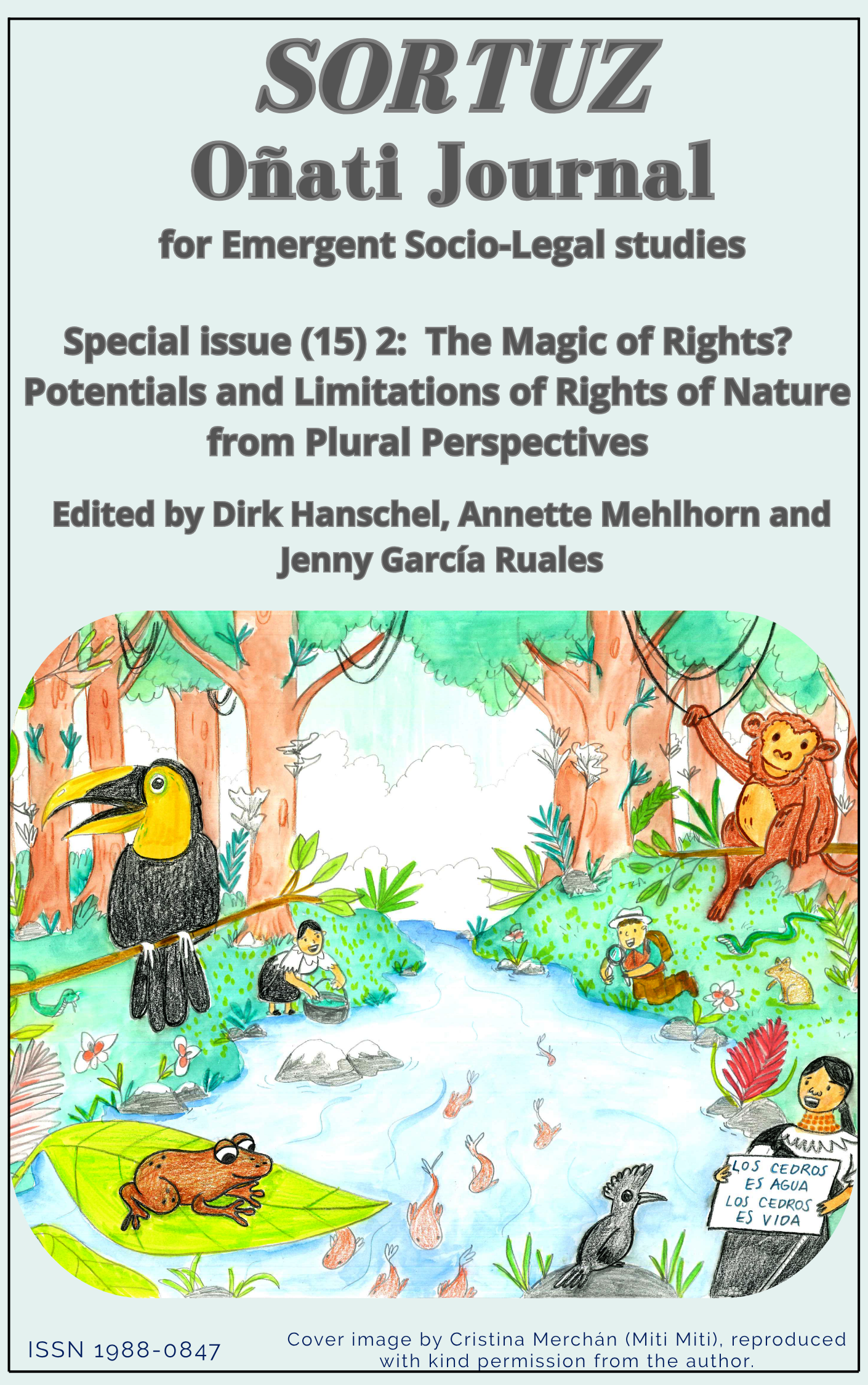Reframing End-of-Life Jurisprudence
Legal Contours, Bioethical Tensions, and the Evolving Right to Die with Dignity in India
DOI:
https://doi.org/10.35295/sz.iisl/2379Palavras-chave:
Passive Euthanasia, Right to Die with Dignity, End-of-Life Jurisprudence, Bioethics in India, Advance Directives (Living Will)Resumo
This paper reflects on the changing legal, ethical, and cultural dimensions of euthanasia, especially passive euthanasia as envisaged by Article 21 of the Constitution of India. The paper maps out the crucial legal landmarks—from Gian Kaur v. State of Punjab (1996) to Aruna Shanbaug v. Union of India (2011) and Common Cause v. Union of India (2018), signalling the transition in judicial jurisprudence, wherein the right to die with dignity has been increasingly acknowledged. It examines the conceptual contradictions between autonomy and the sanctity of life from a global bioethical perspective, contextualizing the Indian experiences. Even with judicial progress, the practice of passive euthanasia is throttled by procedural hypotrophy, institutional intransigence, and societal equivocation. The paper also raises questions about the utility of living wills, the constraints of the 2024 decision of the Delhi High Court, and the existing legislative vacuum. It makes the case for a right-based, culturally competent, and legislatively sound approach to end-of-life care that respects human dignity and ethical responsibility. Finally, it demands a transition from judicial tolerance to systemic readiness and argues for law reform's human and social desirability.
Downloads
Estatísticas globais ℹ️
|
64
Visualizações
|
21
Downloads
|
|
85
Total
|
|
Referências
Ahmed, Y., and Ali, T., 2013. End of Life Ethics in Cancer Patients: Conflicts and Dilemmas. International Journal of Medical Research [online], 1(2), 7. Available at: https://doi.org/10.4172/2165-7386.S2-003 DOI: https://doi.org/10.5455/ijmr.20130426071323
Ajluni, V., 2023. Respecting autonomy: Prioritizing patient-centered care and decision-making capacity for stronger doctor–patient relationships. Journal of Family Medicine and Primary Care [online], 12(8), 1752. Available at: https://doi.org/10.4103/jfmpc.jfmpc_712_23 DOI: https://doi.org/10.4103/jfmpc.jfmpc_712_23
Akdeniz, M., Yardımcı, B., and Kavukçu, E., 2021. Ethical considerations at the end-of-life care. SAGE Open Medicine [online], 9. Available at: https://doi.org/10.1177/20503121211000918 DOI: https://doi.org/10.1177/20503121211000918
Alanazi, A.A., Kumari, P., and Rao, S., 2024. Palliative-care service coverage in India: A systematic scoping review. Journal of Pain and Symptom Management [online], 67(2), 345–356. Available at: https://doi.org/10.1016/j.jpainsymman.2023.11.014 DOI: https://doi.org/10.1016/j.jpainsymman.2023.11.014
Alanazi, M.A., et al., 2024. Navigating end-of-life decision-making in nursing: a systematic review of ethical challenges and palliative care practices. BMC Nursing [online], 23(1). Available at: https://doi.org/10.1186/s12912-024-02087-5 DOI: https://doi.org/10.1186/s12912-024-02087-5
Arenson, C., et al., 1996. The Importance of Advance Directives in Primary Care. Primary Care Clinics in Office Practice [online], 23(1), 67. Available at: https://doi.org/10.1016/s0095-4543(05)70261-x DOI: https://doi.org/10.1016/S0095-4543(05)70261-X
Azoulay, É., Chaize, M., and Kentish-Barnes, N., 2014. Involvement of ICU families in decisions: fine-tuning the partnership. Annals of Intensive Care [online], 4(1). Available at: https://doi.org/10.1186/s13613-014-0037-5 DOI: https://doi.org/10.1186/s13613-014-0037-5
Beauchamp, T.L., 1999. The medical ethics of physician-assisted suicide. Journal of Medical Ethics [online], 25(6), 437. Available at: https://doi.org/10.1136/jme.25.6.437 DOI: https://doi.org/10.1136/jme.25.6.437
Becker Schwarze, K., 2005. Terri Schiavo: The assessment of the persistent vegetative state in accordance with German law. European Journal of Health Law [online], 12(4), 321–334. Available at: https://doi.org/10.1163/157180905775088559 DOI: https://doi.org/10.1163/157180905775088559
Berestova, A.V., et al., 2019. Ethics in medical decision making: an intercultural outlook. Utopía y Praxis Latinoamericana: Revista Internacional de Filosofía Iberoamericana y Teoría Social [online], 24(5), 144. Available at: https://dialnet.unirioja.es/descarga/articulo/7531733.pdf
Bilimoria, P., 1995. Legal rulings on suicide in India and implications for the right to die. Asian Philosophy [online], 5(2), 159. Available at: https://doi.org/10.1080/09552369508575418 DOI: https://doi.org/10.1080/09552369508575418
Blank, R.H., 2011. End-of-Life Decision Making across Cultures. The Journal of Law Medicine & Ethics [online], 39(2), 201. Available at: https://doi.org/10.1111/j.1748-720x.2011.00589.x DOI: https://doi.org/10.1111/j.1748-720X.2011.00589.x
Bolcato, M., et al., 2020. The new Italian law 219/2017: an extraordinary clinical tool in internal medicine. Italian Journal of Medicine [online], 14(3). Available at: https://doi.org/10.4081/itjm.2020.1280 DOI: https://doi.org/10.4081/itjm.2020.1280
Erlen, J.A., 2005. When Patients and Families Disagree. Orthopaedic Nursing [online], 24(4). Available at: https://doi.org/10.1097/00006416-200507000-00009 DOI: https://doi.org/10.1097/00006416-200507000-00009
Feldman, D.B., 2006. Can Suicide be Ethical? A Utilitarian Perspective on the Appropriateness of Choosing to Die. Death Studies [online], 30(6), 529. Available at: https://doi.org/10.1080/07481180600742517 DOI: https://doi.org/10.1080/07481180600742517
Government of India, Ministry of Health and Family Welfare, 2012. Operational guidelines for the National Programme for Palliative Care (NPPC). Directorate General of Health Services.
Grignoli, N., Bernardo, V.D., and Malacrida, R., 2018. New perspectives on substituted relational autonomy for shared decision-making in critical care. Critical Care [online], 22(1). Available at: https://doi.org/10.1186/s13054-018-2187-6 DOI: https://doi.org/10.1186/s13054-018-2187-6
Inbadas, H., 2017. Indian philosophical foundations of spirituality at the end of life. Mortality [online], 23(4), 320. Available at: https://doi.org/10.1080/13576275.2017.1351936 DOI: https://doi.org/10.1080/13576275.2017.1351936
Kinlaw, K., 2005. Ethical issues in palliative care. Seminars in Oncology Nursing [online], 21(1), 63. Available at: https://doi.org/10.1053/j.soncn.2004.10.009 DOI: https://doi.org/10.1053/j.soncn.2004.10.009
Kogan, A.C., et al., 2021. Clinician Perspectives on Group Visits for Advance Care Planning Among Caregivers and Older Adult Patients With Heart Failure. The Journal of the American Board of Family Medicine [online], 34(2), 375. Available at: https://doi.org/10.3122/jabfm.2021.02.200270 DOI: https://doi.org/10.3122/jabfm.2021.02.200270
Law Commission of India, 2006. 196th Report: Medical treatment to terminally ill patients (protection of patients and medical practitioners) [online]. Government of India. Available at: https://indiankanoon.org/doc/161101318/
Law Commission of India, 2012. 241st Report: Passive euthanasia – A relook [online]. Government of India. Available at: https://cdnbbsr.s3waas.gov.in/s3ca0daec69b5adc880fb464895726dbdf/uploads/2022/08/2022081061-1.pdf
Majumdar, A., 2004. The Right to Die: The Indian Experience. Australian Journal of Asian Law [online], 6(2), 157. Available at: http://search.informit.com.au/documentSummary;dn=581683503951653;res=E-LIBRARY
Mani, R., 2015. Constitutional and legal protection for life support limitation in India. Indian Journal of Palliative Care [online], 21(3), 258. Available at: https://doi.org/10.4103/0973-1075.164903 DOI: https://doi.org/10.4103/0973-1075.164903
Mathew, P., 1996. Public interest litigation. Indian Social Institute eBooks.
Miller, F.G., and Fletcher, J.C., 1993. The Case for Legalized Euthanasia. Perspectives in Biology and Medicine [online], 36(2), 159. Available at: https://doi.org/10.1353/pbm.1993.0079 DOI: https://doi.org/10.1353/pbm.1993.0079
Miller, R.B., 1995. Assisted Suicide and Euthanasia: Arguments For and Against Practice, Legalization and Participation. Journal of Pharmaceutical Care in Pain & Symptom Control [online], 3(3-4), 11. Available at: https://doi.org/10.1300/j088v03n03_02 DOI: https://doi.org/10.1300/J088v03n03_02
Ohr, S., Jeong, S., and Saul, P., 2016. Cultural and religious beliefs and values, and their impact on preferences for end‐of‐life care among four ethnic groups of community‐dwelling older persons. Journal of Clinical Nursing [online], 26(11-12), 1681. Available at: https://doi.org/10.1111/jocn.13572 DOI: https://doi.org/10.1111/jocn.13572
Prado, C.G., 2013. Moral individualism and elective death. International Journal of Law and Psychiatry [online], 36(5-6), 471. Available at: https://doi.org/10.1016/j.ijlp.2013.06.003 DOI: https://doi.org/10.1016/j.ijlp.2013.06.003
Rao, M., 2021. A multifarious law: heterogeneous meanings of suicide in Indian law. Indian Law Review [online], 5(2), 166. Available at: https://doi.org/10.1080/24730580.2021.1946267 DOI: https://doi.org/10.1080/24730580.2021.1946267
Roberts, L.W., and Termuehlen, G., 2021. Special Report: Ethical Decision-Making in Contemporary Psychiatric Practice—An Evolving Challenge. Psychiatric News [online], 57(1). Available at: https://doi.org/10.1176/appi.pn.2022.1.22 DOI: https://doi.org/10.1176/appi.pn.2022.1.22
Salins, N., et al., 2022. Palliative care in India: Past, present, and future. Indian Journal of Surgical Oncology [online], 13, 83–90. Available at: https://doi.org/10.1007/s13193-022-01556-0 DOI: https://doi.org/10.1007/s13193-022-01556-0
Schneiderman, L.J., and Teetzel, H., 1996. End-of-Life Directives: Powers of Attorney, Living Wills, and Other Matters. Seminars in Respiratory and Critical Care Medicine [online], 17(6), 543. Available at: https://doi.org/10.1055/s-2007-1009930 DOI: https://doi.org/10.1055/s-2007-1009930
Sedhom, R., 2017. Are Advanced Directives Relative? The Ethics of Surrogate Decision Making. Journal of Clinical Research & Bioethics [online], 8(1). Available at: https://www.walshmedicalmedia.com/open-access/are-advanced-directives-relative-the-ethics-of-surrogate-decision-making-2155-9627-1000294.pdf DOI: https://doi.org/10.4172/2155-9627.1000294
Shetty, S., 2024. Euthanasia: Scope and Validity under Abetment to Suicide [online]. 14 February. Available at: https://doi.org/10.2139/ssrn.4793993 DOI: https://doi.org/10.2139/ssrn.4793993
Steinberg, S., 2011. Cultural and religious aspects of palliative care. International Journal of Critical Illness and Injury Science [online], 1(2), 154. Available at: https://doi.org/10.4103/2229-5151.84804 DOI: https://doi.org/10.4103/2229-5151.84804
Vadeyar, B., and Singh, L., 2013. Living Wills in India: A Safeguard to a Patient’s Right to Death with Dignity [online]. 5 August. Available at: https://doi.org/10.2139/ssrn.2305897 DOI: https://doi.org/10.2139/ssrn.2305897
Van der Geest, S., and Satalkar, P., 2019. Autonomy and dying: Notes about decision-making and “completed life” euthanasia in the Netherlands. Death Studies [online], 45(8), 613. Available at: https://doi.org/10.1080/07481187.2019.1671543 DOI: https://doi.org/10.1080/07481187.2019.1671543
Downloads
Publicado
Como Citar
Edição
Seção
Licença
Copyright (c) 2025 Amitabh Dwivedi

Este trabalho está licenciado sob uma licença Creative Commons Attribution 4.0 International License.
Sortuz: Oñati Journal of Emergent Socio-Legal Studies provides immediate open access to all its content on the principle that making research freely available to the public supports a greater global exchange of knowledge.
All articles are published under a Creative Commons Attribution 4.0 International License.
Copyright and publishing rights are held by the authors of the articles. We do, however, kindly ask for later publications to indicate Sortuz as the original source.

















